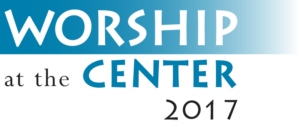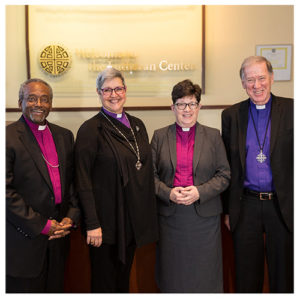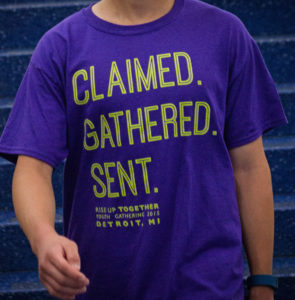Stephanie Opsal, Farmington, NM
Warm-up Questions
- Are you good at determining right from wrong (in your actions or in others’ actions)?
- How do you make choices; what is your guide?
Prepare, Repent, and Bear Fruit
 A psychological research study published in April of this year suggests that children, from a very young age, can recognize and respond to people exhibiting negative behaviors. An experiment commonly labeled “bribing babies with graham crackers” reveals evidence that children, ages 1-8 have a tendency to avoid interactions with persons exhibiting certain behaviors.
A psychological research study published in April of this year suggests that children, from a very young age, can recognize and respond to people exhibiting negative behaviors. An experiment commonly labeled “bribing babies with graham crackers” reveals evidence that children, ages 1-8 have a tendency to avoid interactions with persons exhibiting certain behaviors.
Children often show acceptance of another person by their willingness to receive gifts from them. In step one, children ages 5-8 were offered one sticker from one character and multiple stickers from a second character. They had to choose from which person they would accept gifts. Not surprisingly, the kids accepted stickers from the one offering more. Step two presented the same situation, except character one was a kind person and character two was a bully who hit kids at school. In this case, 80% of kids preferred to take one sticker from a nice person rather than 2-8 stickers from a mean person.
A similar activity involved one-year-old infants. With two equal puppet characters offering graham crackers, babies also accepted the one who was offering more of the snacks. However, when puppet #1 acted out, hurting a lamb stuffed animal, and puppet #2 helped a lamb stuffed animal, babies chose to receive fewer crackers from the good-hearted giver (puppet #2). This research suggests that people can recognize right moral actions from wrong ones and choose to deal with people who act kindly and justly, even if it means a personal cost of fewer gifts.
How do young kids know right from wrong? Have they learned already, or do they innately understand? God said he has “written the law on their hearts…while their conscience also bears witness…” (Jeremiah 31:33, Romans 2:15, Hebrews 10:16). As we see in the gospel reading, John the Baptist bears witness that God can see into immoral hearts, despite our efforts to hide our intentions.
Discussion Questions
- What do you think of this research? Were you surprised to read this? (Full article:
- The research also suggests that subjects will “do business” with the less attractive giver if the reward for doing so is particularly high (16 stickers). Does this suggest that everyone has a price? At what point are you willing to “deal with the devil?” What are your limits beyond which you will not go?
- Have you ever interacted with a person or situation that simply did not feel right? Do you think this had to do with your inner sense of right v. wrong?
- Do you avoid people with questionable character? Why? Do you think you should?
Second Sunday of Advent
(Text links are to Oremus Bible Browser. Oremus Bible Browser is not affiliated with or supported by the Evangelical Lutheran Church in America. You can find the calendar of readings for Year B at Lectionary Readings
For lectionary humor and insight, check the weekly comic Agnus Day.
Gospel Reflection
In today’s passage, Jesus had not yet appeared on the scene at the Jordan River, but John the Baptist was busy preparing the people for His arrival. John lived a life very different from the culture. He ate locusts and wild honey in the desert and wore clothes of camel’s hair. More important, he lived humbly as a servant of God, while some religious leaders lived greedy, self-promoting lives. This stark contrast drew people to his message.
John’s message proved counter-cultural. He proclaimed the coming of the Lord and called leaders and common people alike to repent of their sins and be baptized. Many call him the first true prophet in 400 years. His focus on praising God alone and boldly speaking the truth caught people’s attention. He did not seek “followers of John” but rather people prepared to follow the coming Christ. John’s message challenged those who lived self-righteous lives which looked good but were rooted in wrong motivations. God desires that our obedience arise out of love for Him, rather than out of a desire to complete a checklist of superficially pious actions. John baptized people to signify a person’s public confession of sin and repentance, an outward sign of inner cleansing of the heart.
Unfortunately, not every people group who visited John wanted baptism for the right reasons. Some believed they were righteous without any need to change their attitudes. They did not see their imperfection and looked down on “sinners,” treating others poorly and acting to promote their own interests instead of God’s. John called them out, warning them that God has the power to save or destroy, and the way a person lives and acts reflects their inward beliefs about God.
We are called to live aware of our need for Jesus and to “produce good fruit,”(3:8) from the heart in response to all He has done for us. Verse 10 of Matthew 3 states: “…every tree that does not produce good fruit will be cut down and thrown into the fire.”
The passage closes with a reminder than John’s baptism was to prepare people for Jesus’ coming. Soon, the true Lord Jesus would baptize them also with the Holy Spirit., giving His life for others.
Discussion Questions
- Have you been baptized? What does baptism mean to you?
- Do you practice what you preach? Do your actions show what you believe?
- Why do you think John looked different than other religious leaders?
- Lutheran have confessed that we are all simultaneously saint and sinner, always imperfect but ever beloved by God. How do you think John would have responded to that insight?
Activity Suggestions
- Matthew 3 describes how John looked and ate. Use the Bible’s words to draw a picture of your interpretation of John the Baptist. Next to it, draw a picture of a pastor or religious leader as you would generally picture him or her. Compare pictures among yourselves and discuss why John may have looked and lived so differently from other priests or leaders.
- Act out the story of Matthew 3, including roles of John (the Baptizer), a humble person who wants to repent and be baptized, an arrogant Pharisee, and a popular Sadducee. Add your own ad lib commentary and emotions.
Closing Prayer
Lord Jesus, we praise you for showing evidence of your coming throughout the Bible and through people such as John the Baptist. Guide us to live lives that line up with your teaching and reflect our inner devotion to you and gratitude for all you have done for us. Thank you for coming to save us. In your holy name, we pray. Amen.


 future. This year marks 35 years since the first reported case of what would come to be known as AIDS in the United States by the Centers for Disease Control. Since that time, we have learned much more about effective treatment and prevention. However, there is much progress to be made. HIV continues to affect many in our communities and throughout the world, including more than 1.2
future. This year marks 35 years since the first reported case of what would come to be known as AIDS in the United States by the Centers for Disease Control. Since that time, we have learned much more about effective treatment and prevention. However, there is much progress to be made. HIV continues to affect many in our communities and throughout the world, including more than 1.2


 William and the other Hispanic members became my mentors in mission, setting a new table. When we began our liturgy in the Spanish language, it was William who accompanied the hymns on his violin and who wrote the prayers of the church in a language of poetic beauty. He played, prayed, and led, because one day I stopped ignoring him and listened.
William and the other Hispanic members became my mentors in mission, setting a new table. When we began our liturgy in the Spanish language, it was William who accompanied the hymns on his violin and who wrote the prayers of the church in a language of poetic beauty. He played, prayed, and led, because one day I stopped ignoring him and listened.



